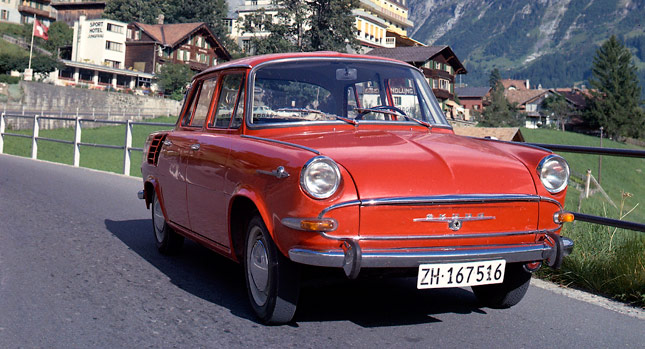For those of you who grew up in communist countries like I did, the Skoda 1000 MB is a familiar car. Now, at its 50th anniversary, the compact model is one of Skoda’s most iconic models, as it was the brand’s first vehicle that combined a rear-mounted engine with rear-wheel-drive, independent suspension and unibody construction.
Built in a completely new plant and sporting a radically new vehicle design, the Skoda 1000 MB was a revolution for the Czech carmaker when it launched on March 21, 1964.
The model was a bestseller in Czechoslovakia and abroad and shaped Skoda’s models strategy until the late 1980s, paving the way for similar models like the Skoda 100, 105/120/125 and 130/135/136 series. Around 443,000 Skoda 1000 MBs were built between April 1964 and August 1969, more than half of which were exported to foreign countries, even as far as New Zealand and Australia.
The name 1000 MB stands for the 1,000-cc engine displacement and Mladá Boleslav, the location of Skoda’s headquarters. It was offered in many different versions, including sporty editions and the 1000 MBX two-door model.
Skoda says it was the first European car manufacturer to utilize aluminum die-casting in engine block production, with the four-speed gearbox case also produced using this method. Located behind the rear axle, the water-cooled 1.0-liter OHV four-cylinder engine produced 36 hp (37PS). Since the car only weighed 755 kg (1,664 lbs), the engine returned an average 7 to 8 l/100 km (33.6 – 29.4 mpg US). Top speed was 120 km/h (75 mph). In 1966, engine power was increased to 43 hp.
With its compact dimensions (4.17 m long, 1.62 m wide and 1.39 m high), the Skoda 1000 MB was an ideal car for a family, featuring individually folding seats and a 220-liter (7.7 cu-ft) boot under the front bonnet. The spare wheel was located under the boot.
By Dan Mihalascu
PHOTO GALLERY



























